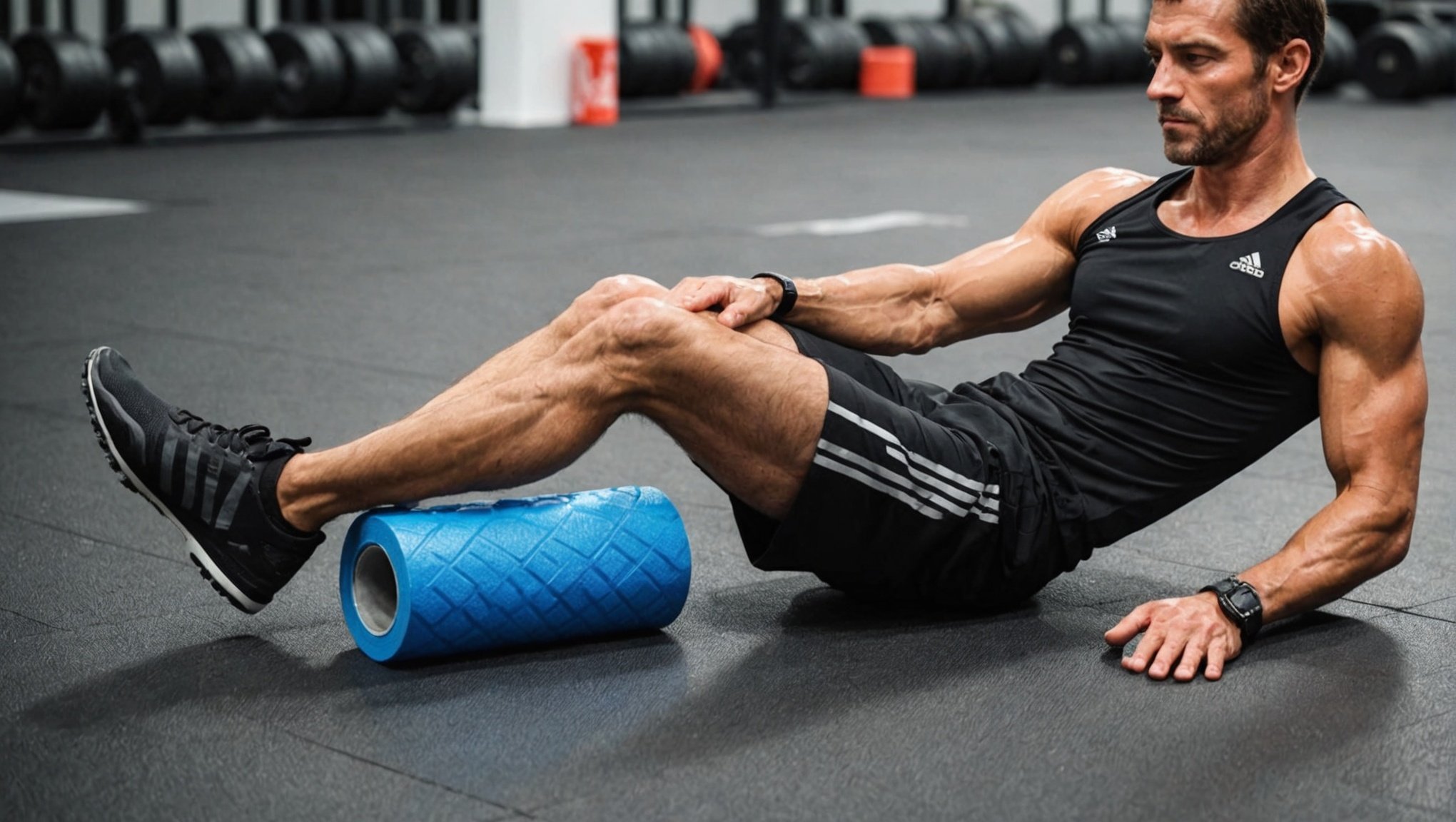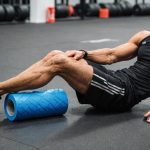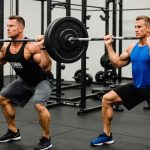Muscle recovery and relaxation is an essential part of any exercise regime. One of the most effective methods to release tension and alleviate pain from your muscles post-workout is by using a foam roller. But with an array of foam rollers available on Amazon and different techniques to use them, which one offers the best muscle relaxation? We’ve analyzed the various foam rolling techniques to help you make an informed decision for your recovery process.
The Importance of Foam Rolling for Muscle Relaxation and Recovery
Foam rolling is not just a passing fitness fad. It’s a proven method of relieving muscle tension, aiding recovery, and improving your overall physical performance. In this section, we’ll explore why foam rolling is crucial for muscle relaxation and recovery.
Also to see : How does the manipulation of training volume affect muscle hypertrophy in advanced lifters?
Foam rolling is a self-myofascial release (SMR) technique that massages and releases tight muscles, breaks down scar tissue and improves blood circulation. By applying pressure to specific points on your body, you can aid the recovery of muscles and return them to their normal function. This means your muscles are elastic, healthy, and ready to perform at a moment’s notice.
Regular foam rolling can help prevent common injuries associated with tight and fatigued muscles. It’s an excellent tool for pre-workout warm-ups and post-workout cooldowns. Foam rolling post-workout helps to flush away lactic acid build-up, reducing inflammation and muscle soreness.
Also to read : What are the most effective warm-up routines for enhancing bench press performance?
Traditional Foam Roller Techniques
There are a lot of ways to use a regular cylindrical foam roller to massage and relax various muscles in your body. These techniques primarily involve using the weight of your body to roll back and forth over the roller. Let’s touch upon some of the most common traditional foam rolling techniques.
For your lower body, position the foam roller under your calves or thighs, and use your arms and upper body strength to slide back and forth over it. To target the upper body, such as your lats or upper back, position the foam roller in the appropriate area and use your legs and core to roll.
These techniques offer a decent amount of pressure and help release tension from large muscle groups. However, they can be uncomfortable or inefficient for targeting smaller muscle groups or hard-to-reach areas.
The Benefits of Vibrating Foam Rollers
Vibrating foam rollers combine the traditional foam rolling techniques with vibration technology for a deeper, more efficient massage. They have gained popularity for their ability to target and release muscle tension effectively.
Vibrating foam rollers offer all the benefits of traditional foam rolling and more. The addition of vibration helps to further relax tight muscles, increase blood flow and flexibility, and reduce post-workout pain and recovery time.
A study published in the Journal of Clinical and Diagnostic Research found that vibration rolling was more effective than traditional foam rolling at improving athletes’ range of motion and reducing muscle soreness.
Grid and Textured Foam Rollers: Digging Deeper into Muscle Tension
Grid and textured foam rollers have a unique design that targets tight muscles more effectively. They have raised and varied patterns that mimic the hands of a massage therapist, providing a more in-depth and therapeutic muscle recovery experience.
These foam rollers are ideal for runners, athletes, or just about anyone who regularly engages in physical activity. The grids and bumps on these rollers can get into the fascia and muscle fibers that a smooth foam roller might miss. This results in a deeper massage and better muscle tension release.
Selecting the Best Foam Roller and Technique for You
Choosing the best foam roller for your post-workout recovery ultimately depends on your individual preferences and needs. If you’re new to foam rolling or have sensitive muscles, a soft, smooth foam roller and traditional techniques might be best. For deeper massages and advanced foam rolling, a grid or vibrating foam roller could be the most beneficial.
Listen to your body and adjust your foam rolling techniques as necessary. You should feel pressure and maybe slight discomfort, but not pain during or after foam rolling. If you do experience pain, consider consulting a physical trainer or physical therapist to ensure you’re using the correct technique.
Foam rolling is an excellent recovery tool, but remember that it’s just one part of a holistic approach to fitness and health. Regular exercise, a balanced diet, adequate sleep, and proper hydration all play vital roles in muscle recovery and overall well-being.
How to Incorporate Foam Rolling into Your Exercise Routine
Incorporating foam rolling into your exercise routine requires understanding how to use the foam roller effectively. Whether you’re new to foam rolling or an experienced user, these tips will help enhance your post-workout muscle relaxation.
Before your workout, consider using a foam roller for a warm-up. Roll for about five to ten minutes to increase your blood flow and loosen up your muscles. It’s a fantastic method to prepare your muscles and joints for an intense workout. Remember, the foam roller should be used in conjunction with a full-body dynamic warm-up.
After your workout, use your foam roller for a cool-down. Spend a good 15 minutes rolling out your entire body. Focus on the muscle groups that were most heavily involved in your workout. This will help flush out lactic acid, reduce muscle soreness, and improve your range of motion.
During your rest days, foam roll to help speed up recovery. Target your tight muscles and trigger points. Use high density foam rollers or vibrating foam rollers if you need a deeper massage. Rolling on your off days can also help improve your mobility and flexibility.
The type of foam roller you use also matters. Smooth foam rollers are best for beginners and for those who prefer a lighter massage. High density foam rollers are great for individuals who prefer a deep tissue massage. If you want a versatile foam roller, consider investing in a grid or textured foam roller.
Always remember that foam rolling shouldn’t be painful. If you feel severe pain while rolling, stop immediately and consult a physical therapist. Foam rolling is all about promoting muscle recovery and relaxation, not causing additional pain or discomfort.
Conclusion: The Role of Foam Rolling in Muscle Relaxation and Recovery
In conclusion, foam rolling is an effective technique for post-workout muscle relaxation and recovery. It offers numerous benefits, from releasing muscle tension to promoting blood flow and reducing muscle soreness. There’s a reason why foam rollers have become a staple in many fitness enthusiasts’ workout routines.
The best foam roller and technique for you will depend on your specific needs and preferences. Beginners might prefer a smooth, low-density foam roller and traditional foam rolling exercises. For more advanced users or those who want a more intense massage, a high density, vibrating, or textured foam roller might be the best choice.
Foam rolling can be performed pre-workout, post-workout, or during rest days to enhance muscle recovery. However, like any other exercise tool, it’s essential to use foam rollers correctly to avoid injury and reap their full benefits.
While foam rolling is a powerful tool for muscle recovery, it’s just one part of a holistic approach to fitness and health. Regular exercise, a balanced diet, adequate sleep, and proper hydration are equally important. But with the right foam roller and proper techniques, you’ll be well on your way to better muscle recovery and performance. Remember to listen to your body, be consistent, and most importantly, enjoy the process.













